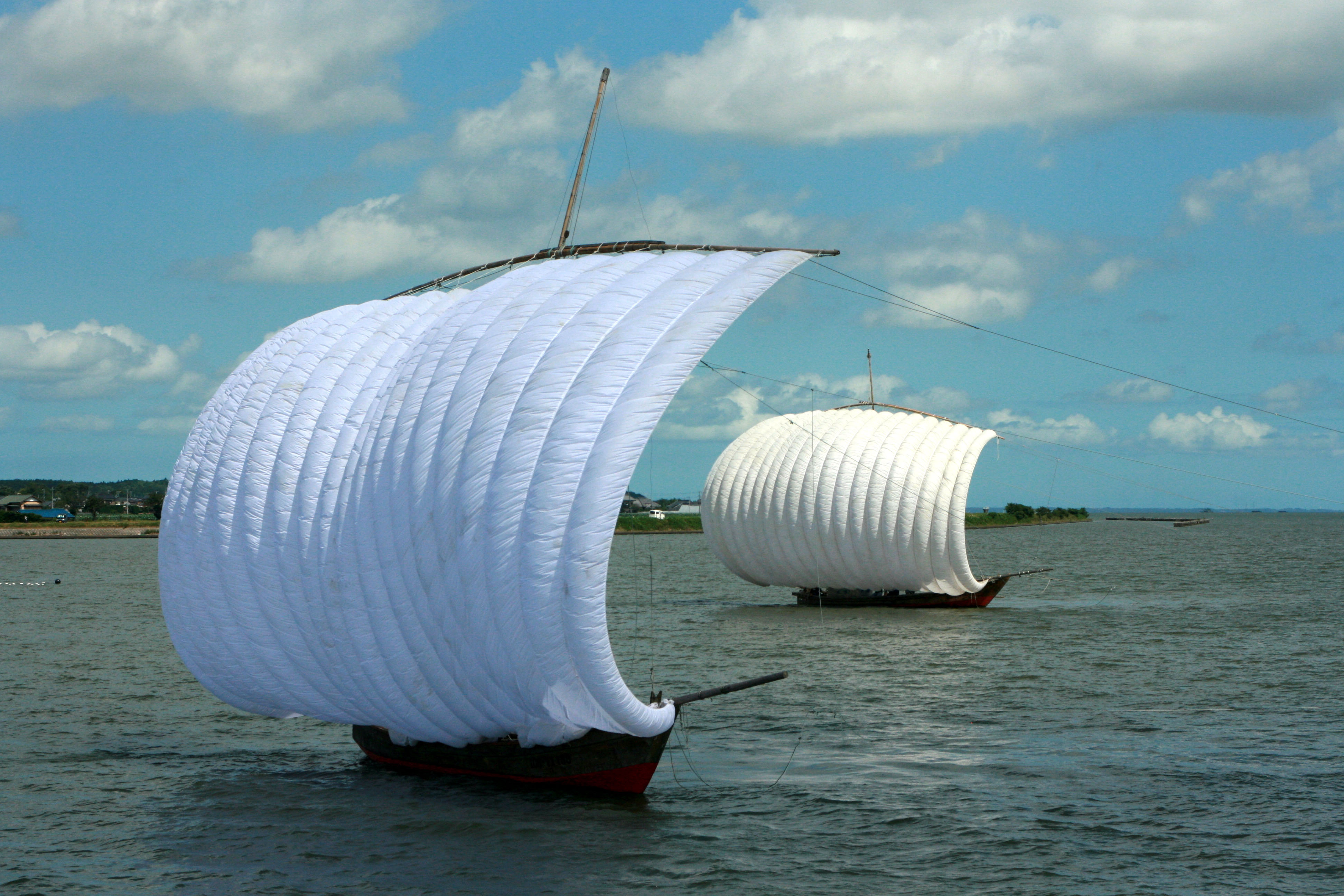It's difficult to imagine what Lake Kasumigaura in Ibaraki Prefecture would have looked like a century ago. Most of its surrounding areas have now become dormitory towns for Tokyo, just 50 km to the southwest. These days, too, where the traditional old lotus paddies do remain, they tend to be covered with unsightly nylon nets to keep out birds.
But once you get out on the lake's broad waters, time seems to slip backward and it feels as if the past comes to life — especially if your trip coincides with a demonstration of a particularly dramatic, old-style fishing vessel known as a hobikisen (literally, "sail-pulled boat") at work.
On a recent trip to Kasumigaura, a Joban Line train conveyed me from Tokyo's Ueno Station to Tsuchiura Station in about an hour. From there, it was just a 20-minute walk to the shores of the northwestern arm of V-shaped Lake Kasumigaura, which, with an area of 220 sq. km, is Japan's second largest lake, behind Lake Biwa, near Kyoto.



